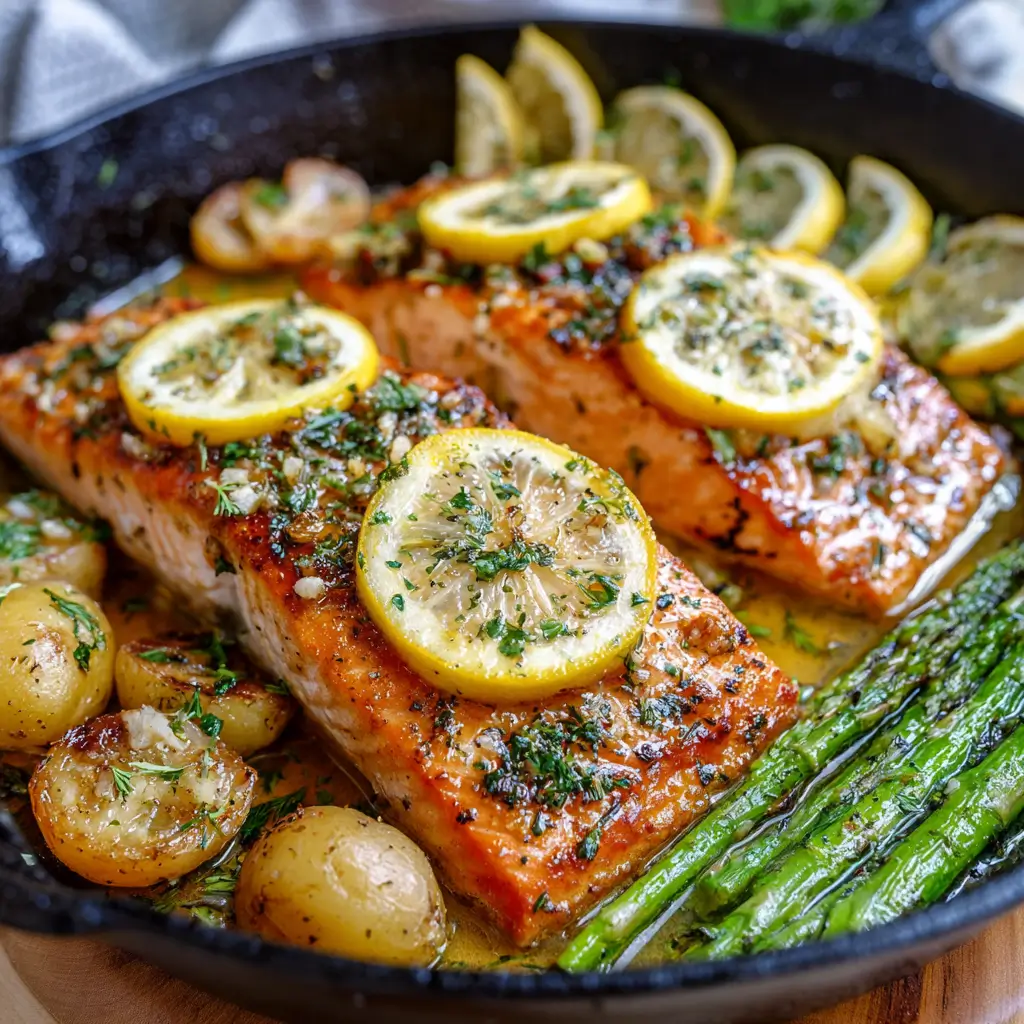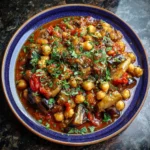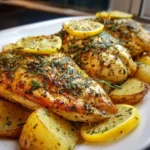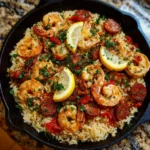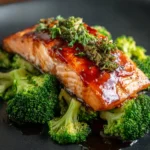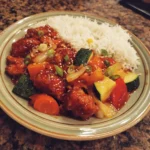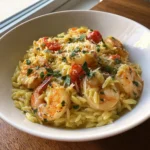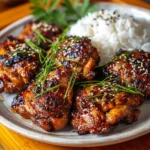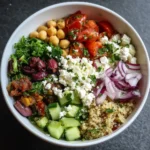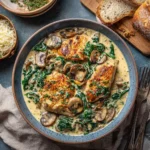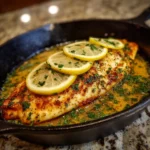One Pan Lemon Garlic Butter Salmon: A Complete Guide
The History of One Pan Lemon Garlic Butter Salmon
The origins of salmon as a culinary staple trace back thousands of years, particularly among indigenous populations in the Pacific Northwest and Northern Europe, where salmon was revered not only for its rich flavor but also its nutritional value. Over time, as trade routes expanded and Mediterranean ingredients like garlic, lemon, and olive oil became more accessible, new preparations emerged that combined these flavors with the delicate texture of salmon.
The concept of one-pan cooking has ancient roots, evolving from practical kitchen needs—cooking everything together to save time, reduce cleanup, and maximize flavor infusion. The modern version of One Pan Lemon Garlic Butter Salmon likely gained popularity in the 20th century, influenced by French and Italian cooking techniques that emphasize simplicity and high-quality ingredients. Dishes like papillote (en papillote), where fish is baked in parchment with herbs and citrus, inspired home cooks to experiment with sheet pan roasting. Today, this dish is a favorite among health-conscious families, meal preppers, and busy professionals due to its ease, elegance, and balance of taste and nutrition.
Ingredients Breakdown
The magic of One Pan Lemon Garlic Butter Salmon lies in its carefully balanced ingredients, each contributing unique flavors and textures:
- Salmon Fillets: Rich in omega-3 fatty acids and protein, wild-caught salmon offers a deeper flavor and firmer texture than farmed. Look for center-cut fillets with even thickness for consistent cooking.
- Butter: Unsalted butter allows you to control the salt level while adding richness and mouthfeel. When browned slightly, it develops a nutty depth known as beurre noisette.
- Fresh Garlic: Minced garlic provides a pungent aroma and savory backbone. Cooking it gently in butter mellows its bite and infuses the sauce.
- Lemon: Both zest and juice are used. Zest adds bright citrus oils without acidity, while juice contributes tartness that cuts through the fat of the salmon and butter.
- Fresh Herbs: Parsley or dill are commonly used. Parsley adds freshness, while dill enhances the fish’s natural flavor. Thyme or rosemary can be added for earthiness.
- Olive Oil: Used to coat vegetables and prevent sticking, extra virgin olive oil adds fruity notes and supports healthy fats.
- Vegetables: Asparagus, broccoli, bell peppers, zucchini, cherry tomatoes, or green beans are popular choices. They roast beautifully alongside the salmon, absorbing the lemon-garlic butter sauce.
- Salt & Pepper: Essential seasonings that enhance all other flavors. Freshly cracked black pepper adds a subtle heat.
- Optional Additions: Capers for brininess, red pepper flakes for spice, white wine for deglazing, or honey for a touch of sweetness.
Step-by-Step Recipe
- Preheat the Oven: Set your oven to 400°F (200°C). This temperature ensures the vegetables caramelize slightly while the salmon cooks through without drying out.
- Prepare the Baking Sheet: Line a large rimmed baking tray with parchment paper or lightly grease it with olive oil to prevent sticking and simplify cleanup.
- Season the Salmon: Pat the salmon fillets dry with paper towels. Season both sides with salt, pepper, and a pinch of lemon zest. Place them skin-side down (if skin-on) on one side of the tray.
- Prepare the Vegetables: Chop your chosen vegetables into uniform pieces for even cooking. Toss them in a bowl with olive oil, minced garlic, salt, pepper, and optional herbs. Spread them on the other side of the baking sheet, leaving space around the salmon.
- Roast for 10 Minutes: Place the tray in the oven and roast for about 10 minutes. This gives the vegetables a head start since they take longer to cook than the salmon.
- Make the Lemon Garlic Butter Sauce: While the tray is in the oven, melt butter in a small saucepan over medium heat. Add minced garlic and sauté for 1 minute until fragrant. Stir in lemon juice, zest, chopped parsley, and a pinch of salt. Keep warm.
- Add the Sauce and Finish Roasting: After 10 minutes, remove the tray from the oven. Drizzle half of the lemon garlic butter sauce over the salmon and vegetables. Return to the oven and bake for another 8–12 minutes, depending on the thickness of the salmon, until the internal temperature reaches 125–130°F (52–54°C) for medium doneness.
- Rest and Serve: Remove from the oven and let the salmon rest for 3–5 minutes. Drizzle with the remaining sauce and garnish with fresh herbs and lemon slices. Serve immediately.
Tips for the Perfect One Pan Lemon Garlic Butter Salmon
- Uniform Cutting: Cut vegetables into similar sizes so they cook evenly. Thicker veggies like carrots should be sliced thinner than softer ones like zucchini.
- Dry the Salmon: Moisture is the enemy of browning. Always pat salmon dry before seasoning to ensure a nice sear and prevent steaming.
- Don’t Overcook: Salmon continues to cook after removal from the oven. Pull it out just before it’s done to avoid dryness.
- Baste Midway: For extra flavor, baste the salmon with the pan juices halfway through cooking.
- Use a Meat Thermometer: For precision, use an instant-read thermometer. Aim for 125°F for medium-rare, which will rise to 130–135°F as it rests.
- Rotate the Pan: Ovens have hot spots. Rotate the baking sheet halfway through cooking if your oven heats unevenly.
- Let It Rest: Allowing the salmon to rest helps redistribute juices, resulting in a moister bite.
- Customize Doneness: If serving guests with different preferences, place thicker fillets toward the back (cooler part of oven) and thinner ones near the front.
Variations and Customizations
This recipe is highly adaptable. Here are some creative twists:
- Dairy-Free Version: Substitute butter with coconut oil or vegan butter. Use nutritional yeast for a cheesy note if desired.
- Spicy Kick: Add red pepper flakes to the butter sauce or toss vegetables with chili oil before roasting.
- Mediterranean Style: Include kalamata olives, artichoke hearts, and sun-dried tomatoes. Swap dill for oregano.
- Asian-Inspired: Replace lemon with lime, use sesame oil instead of olive oil, add ginger and soy sauce to the butter mixture, and garnish with green onions and sesame seeds.
- Creamy Version: Stir a splash of heavy cream or Greek yogurt into the butter sauce for a richer finish.
- With Potatoes: Add baby potatoes or sweet potatoes to the pan. Parboil them first for faster roasting.
- Herb Variations: Try tarragon for a French twist, cilantro for a fresh profile, or basil for Italian flair.
- Wine-Enhanced: Deglaze the butter pan with a splash of dry white wine like Sauvignon Blanc or Pinot Grigio for added complexity.
- Gluten-Free & Paleo Friendly: Naturally compliant—just ensure all added ingredients (like sauces) are certified gluten-free if needed.
- Keto Option: Focus on low-carb vegetables like asparagus, broccoli, zucchini, and spinach. Avoid starchy additions.
Health Considerations and Nutritional Value
One Pan Lemon Garlic Butter Salmon isn’t just delicious—it’s packed with nutrients that support overall wellness.
- Omega-3 Fatty Acids: Salmon is one of the best sources of EPA and DHA, which promote heart health, reduce inflammation, and support brain function.
- High-Quality Protein: Essential for muscle repair, immune function, and satiety. A 6-ounce fillet contains about 34 grams of protein.
- Vitamins & Minerals: Rich in vitamin D, selenium, B12, and potassium—nutrients vital for energy metabolism, bone health, and nerve function.
- Antioxidants from Vegetables: Colorful veggies provide fiber, vitamin C, and phytonutrients that combat oxidative stress.
- Healthy Fats: Olive oil and butter (in moderation) contribute monounsaturated fats and fat-soluble vitamins. Using grass-fed butter increases levels of beneficial CLA (conjugated linoleic acid).
- Lemon Benefits: Citrus boosts vitamin C intake, aids iron absorption, and may support digestion.
- Low Carb & Satiating: Ideal for weight management diets due to its high protein and healthy fat content, keeping you full longer.
- Cautions: Those with seafood allergies should avoid salmon. Individuals monitoring cholesterol may prefer moderate butter use or substitutions. Always source salmon responsibly to minimize exposure to environmental contaminants like mercury (wild Alaskan salmon is often recommended).
Nutritional Estimate (per serving, approx. 6 oz salmon + 1 cup veggies):
Calories: ~450 | Protein: 34g | Fat: 32g (Saturated: 10g) | Carbohydrates: 8g | Fiber: 4g | Sugar: 3g | Sodium: 400mg (varies with added salt)
Ingredients
- 4 (6-ounce) salmon fillets, skin-on or skinless
- 3 tablespoons unsalted butter
- 4 cloves garlic, minced
- Zest and juice of 1 large lemon (about 3 tbsp juice)
- 2 tablespoons fresh parsley, finely chopped (plus extra for garnish)
- 2 tablespoons olive oil
- 1 pound mixed vegetables (e.g., asparagus, cherry tomatoes, bell peppers, zucchini)
- Salt and freshly ground black pepper, to taste
- Optional: 1/2 teaspoon red pepper flakes, 1 tablespoon capers, 1/4 cup white wine
Directions
- Preheat oven to 400°F (200°C). Line a large baking sheet with parchment paper.
- Pat salmon fillets dry and season both sides with salt, pepper, and half the lemon zest. Place on one side of the baking sheet.
- In a bowl, toss chopped vegetables with olive oil, half the minced garlic, salt, and pepper. Spread on the opposite side of the tray.
- Roast in the preheated oven for 10 minutes.
- While roasting, melt butter in a small saucepan over medium heat. Add remaining garlic and cook for 1 minute until fragrant. Stir in lemon juice, remaining zest, parsley, and any optional ingredients (capers, red pepper flakes). Simmer 1 minute, then remove from heat.
- Remove tray from oven. Drizzle half the lemon garlic butter sauce over salmon and vegetables. Return to oven.
- Continue roasting for 8–12 minutes, until salmon is opaque and flakes easily with a fork, reaching an internal temperature of 125–130°F.
- Let rest 5 minutes. Drizzle with remaining sauce, garnish with fresh parsley and lemon slices.
- Serve warm directly from the pan for easy presentation.
FAQ
Can I use frozen salmon?
Yes, but thaw it completely in the refrigerator overnight for best texture. Never cook frozen salmon straight from the freezer in this recipe, as it will release too much water and steam rather than roast.
Can I make this on the stovetop?
Absolutely! Sear the salmon skin-side down in a skillet with butter and garlic for 5–6 minutes, flip, add vegetables and lemon juice, cover, and cook another 4–5 minutes until done.
How do I store leftovers?
Store in an airtight container in the refrigerator for up to 3 days. Reheat gently in the oven at 300°F or enjoy cold in salads.
Can I cook this in foil or parchment packets?
Yes! Wrap salmon and vegetables in parchment or foil with the butter sauce and bake at 400°F for 15–18 minutes. This method locks in moisture and aroma beautifully.
What sides go well with this dish?
Serve with quinoa, brown rice, couscous, or crusty bread to soak up the sauce. A simple arugula salad with vinaigrette complements the richness.
Is this recipe suitable for meal prep?
Excellent for meal prep! Cook and portion into containers. Reheat in the oven or microwave. Note: vegetables may soften upon reheating, so consider adding fresh greens when serving.
Why is my salmon mushy?
This usually happens if the salmon wasn’t patted dry or if it’s overcooked. Also, using low-quality or previously frozen/thawed salmon can affect texture.
Can I use dried herbs instead of fresh?
Yes, but use 1/3 the amount (e.g., 1 tsp dried parsley instead of 1 tbsp fresh). Dried herbs are more concentrated. Add them earlier in cooking for better flavor integration.
Summary
One Pan Lemon Garlic Butter Salmon is a flavorful, nutritious, and effortless dish that brings restaurant-quality elegance to your weeknight table. With minimal cleanup and maximum taste, it’s the perfect balance of healthy living and gourmet satisfaction.
